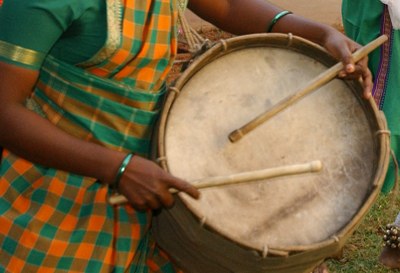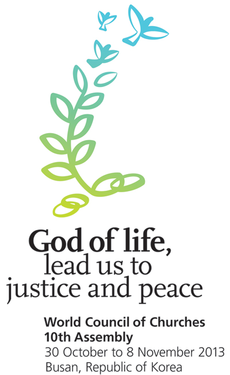Journeying with Asia
The image of the drum is at the centre of prayers and Bible study for Friday, 1st November. The Bible text guiding prayers and study is from Amos 5:14-24.
Drum
The drum is widely used in indigenous cultures around the world. The First Nations of Canada for example, use the drum as a sacred instrument that echoes the heartbeat of life - of human beings and of the earth which they hold as mother.
When First Nations Christians use it within services of worship, it reminds them of “all my relations.” Humans are only one part of the earth's ecosystem and that we are all related to each part of creation, as we are to the Creator, from whom we have our being.
In Asian traditions, the drum is also used as an instrument of praise and celebration. The Bible invites us to “praise God with drums and dancing” (Psalm 150:4); "and Miriam, the prophetess, the sister of Aaron, took the frame-drum in her hand; and all the women went out after her with frame-drums and with dances"(Exodus 15:20-21).
In its very essence, the Christian existence is a Eucharist, a thanksgiving to the Creator for the abundance of God’s gifts to the world. Our praise arising from the heart, builds a clear expression of the optimistic character of the Christian faith. In spite of the many tragedies injuring its body, Asia is indeed a joyful continent. May the deep, joyful commitment of the Korean and other Asian Christians inspire decisively the life and the message of this Assembly.
In Asian traditions, the drum is also used as an instrument of praise and celebration. The Bible invites us to “praise God with drums and dancing” (Psalm 150:4); "and Miriam, the prophetess, the sister of Aaron, took the frame-drum in her hand; and all the women went out after her with frame-drums and with dances" (Exodus 15:20-21).
Opening prayer
L1: Behold the generosity of God’s indiscriminate care for people of all races, cultures and faiths.
L2: We pray for the healing of the nations in Asia and beyond.
C: We pray for your healing, O God.
L1: Listen to the heartbeat of the people; listen to the heartbeat of the earth.
L2: We pray for justice for all God’s creatures; we yearn for the reign of God on earth.
C: We pray for your justice, O God.
L1: Hear the cries of those crushed by division and war; hear the petitions of the violated and oppressed.
L2: We pray that hardened hearts might soften to beat again; that clenched fists might open to love again.
C: We pray for your peace, O God.
Bible study: Roll Justice
Asia is the continent of suffering and hope. On the one hand, the text focuses on people’s suffering and struggle for justice; on the other hand, it provides a vision of the reign of God. Moreover, it suggests concrete ways in which to live out kingdom values on earth through the achievement of justice and peace. Wrestling with the text to find ways to transform suffering, tears and despair into liberation, joy and hope, in the Bible and in our context, is the focus.
Read the complete Bible study by Katie G. Cannon
Questions for reflection and discussion
1) If we desire to live and worship authentically as religious women, men, and children who adhere to covenantal ethics, then take a justice inventory. Let us ask ourselves what are we doing so that justice can roll in terms of the following everyday realities:
- innocent people victimized and persecuted in judicial court procedures
- poor, needy, and oppressed people arbitrarily exploited by the demands of the rich
- individuals traumatized by violence, extortion, physical and sexual abuse
- inequitable practices of taxation and
- dehumanizing elements entrenched in globalized technocratic, digitized systems of production in our church communities?
2) What stands out in your life-journey as situations of doom and gloom?
3) How does this Bible study lead you to new considerations regarding faithful discipleship applicable to situations in your daily life?
4) Share examples of the work of justice in the 21st century.





